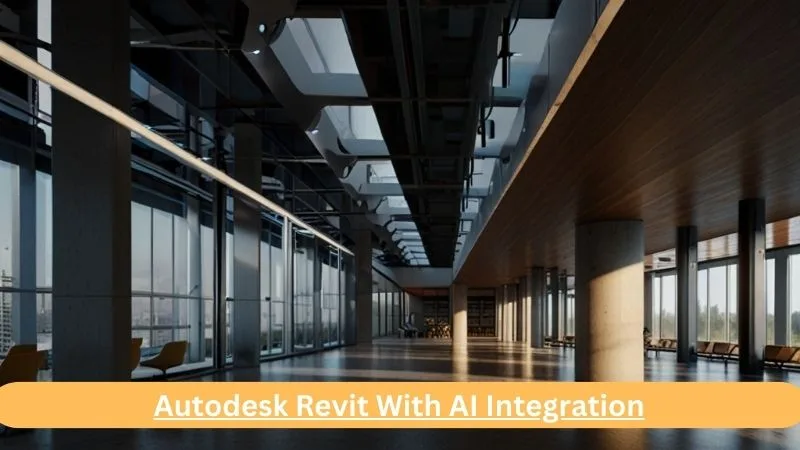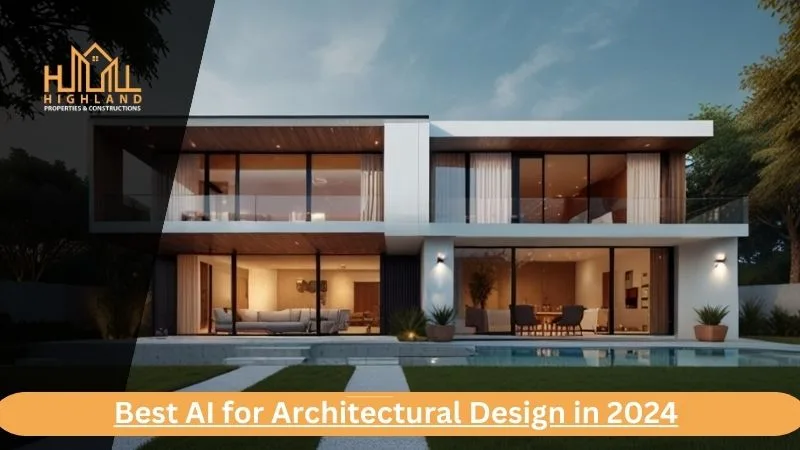Best AI for Architectural Design in 2024
Introduction
The architectural design industry is experiencing a technological revolution, and artificial intelligence (AI) is at the forefront of this transformation. Innovative tools streamline the design process and open new opportunities for creativity and work. This blog will review some of the best AI tools available for architecture and examine how they change the field and empower architects worldwide.
1. Autodesk Revit with AI integration

Autodesk Revit is the foundation of architectural design software and is known for its Building Information Modeling (BIM) capabilities. Recently, Revit has integrated AI capabilities to make it efficient and accurate.
Key Features
Predictive Design: Artificial Intelligence algorithms reduce input and errors by analyzing past work to predict and recommend design options.
Generative Design allows: designers to create goals and constraints, and intelligent Design offers a variety of design options.
Energy Analysis is an artificial: intelligence-supported tool that measures energy efficiency and sustainability and helps architects create environmentally friendly designs.
Benefits
1. Improved the process created by the recursive function.
2. Improved build accuracy and reduced errors.
3. Support sustainable buildings with high energy analysis.
2. Space Maker AI
Spacemaker is an intelligent software developed by Autodesk that focuses on early urban planning and site analysis. It is designed to help architects consider various environmental factors to optimize building design.
Key Features
Site Analysis: Use your skills to evaluate areas such as sunlight, noise, wind, and terrain.
Design Optimization: Help architects choose the most efficiently by creating multiple design options based on input parameters.
Collaboration tools: Support collaboration between stakeholders with real-time updates and information sharing.
Benefits
1. Improve the performance of the building.
2. Save time and resources with automatic web analytics.
3. Enables collaborative design processes.
Also Read Best Architectural Design House Plan in Pakistan
3. Rhino With Grasshopper and AI plugins
Rhino is widely used for parametric Design and the visual programming language Grasshopper. Various smart add-ons further increase its functionality, making it a powerful tool for real estate development.
Key Features
Machine Learning Integration: Plugins like Lunchbox and Owl support machine learning in Grasshopper, enabling predictive modeling and data-driven Design.
Shape Finder: AI algorithms help create complex geometric shapes and improve designs.
Simulation and Analysis: Voltage analysis, thermal performance, etc. Provides advanced simulation tools for
Benefits
1. Ability to create new designs.
2. Simplify data decision-making in the design process.
3. Seamless integration with other design and analysis tools.
4. Test Fit
Test Fit is an artificial intelligence-supported tool for site planning and feasibility studies. It helps architects quickly create and evaluate building plans.
Key Features
Site Planning: Quickly create plans based on zoning regulations, site restrictions, and developer needs.
Real-time feasibility analysis provides instant feedback on a design’s financial feasibility.
Customized Options: Allows designers to fix bugs and instantly see the impact of changes.
Benefits
1. Reduce the time required for first-stage preparation.
2. Provides a good understanding of money and creation ideas.
3. Develop the ability to iterate quickly and make informed decisions.
Also Read Best Architectural Design Services in Pakistan
5. Hypar
Hypar is an artificial intelligence-driven platform that embraces building design. It provides many templates and tools to simplify the design process.
Key Features
Automated Workflow: Create building processes such as structural Design, HVAC, and electrical layouts according to predefined rules and standards.
Customizable Templates: Architects can create and share templates to standardize and automate repetitive design tasks.
Collaboration and sharing: Ensure design information is shared and integrated among project partners.
Benefits
1. Reduce time spent on reprocessing by building a power plant.
2. Improved consistency and accuracy of output.
3. To facilitate collaboration and information sharing between architects and professionals.
6. Architectures AI

Architectures AI is a cloud-based tool designed to improve the architectural process by using artificial intelligence to create and optimize architectural designs. It is beneficial for early designs requiring many iterations and performance studies.
Key Features
Parametric Design: Use these skills to create parametric models that can be easily optimized and modified to fit a variety of designs and constraints.
Feasibility Assessment: Rapid evaluation of the feasibility of different designs, including factors such as zoning regulations, environmental impacts, and price.
Performance Optimization: Analyze the Design based on power consumption, lighting, and space utilization and recommend improvements.
Benefits
1. Speed up the design iteration process by quickly creating and evaluating various design options.
2. Ensures designs comply with regulatory and safety standards.
3. Boost the general caliber and effectiveness of the Design through quality work.
7. Deep Blocks
Deep Blocks is an intelligent software that combines architecture and architecture. It focuses on improving the development process through operational activities such as distribution, financial modeling, and quality control.
Key Features
Zoning Analysis: Artificial intelligence analyzes zoning laws and regulations to help architects and developers understand what to build in a particular area.
Financial Modeling: Ensures understanding of the project’s business by automatically creating design-based financial models.
Design Automation: Create optimal designs that balance architectural aesthetics with financial sustainability and compliance.
Benefits
1. Simplify the complex process of understanding and applying zoning regulations.
2. Provides instant financial information so you can make better decisions during Design.
3. The connection between architecture and construction ensures the Design is beautiful and functional.
Conclusion
Integrating skills in the construction industry is changing the job, making it creative, efficient and accurate. Tools like Archistar.ai and Impression show how AI can improve the design process and create unique opportunities. These tools enable designers to focus on innovative and sustainable solutions by automating routine tasks and providing information through insights. As the use of artificial intelligence in construction continues, the construction of buildings will become more efficient, effective, and visually attractive. Accepting this technology is essential for architects who want to stay at the forefront of their field and push the boundaries of modern Design.
Best AI for Architectural Design – FAQs
Q1. How is artificial intelligence used in architectural design?
Ans: Some examples of the use of artificial intelligence in architecture design include 3D modeling, design, optimization, spatial analysis, virtual reality visualization, smart building, construction monitoring, decision-making information, development of autonomous robots,
Q2. How does artificial intelligence help construction?
Ans: AI uses measurements and data to improve the impact of design and manufacturing processes, provide cost estimates, and streamline processes.
Q3. Which artificial intelligence can draw estate plans?
Ans: Market AI’s generative house plan design streamlines the home design process. It enables designers and architects to produce work on floor plans from inaccessible locations, eliminating manual drawings and providing flexibility in layout selection.





Yasir Muhammad
I am really impressed along with your writing talents
and also with the laout to your blog. Is that
this a paid teme or did you modify it your self? Either way keep up the excellent
hig quality writing, it’s uncomon to look a great blog like this one nowadays.